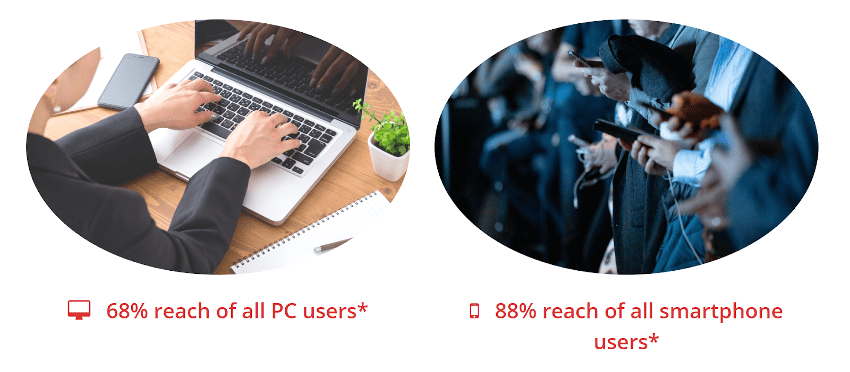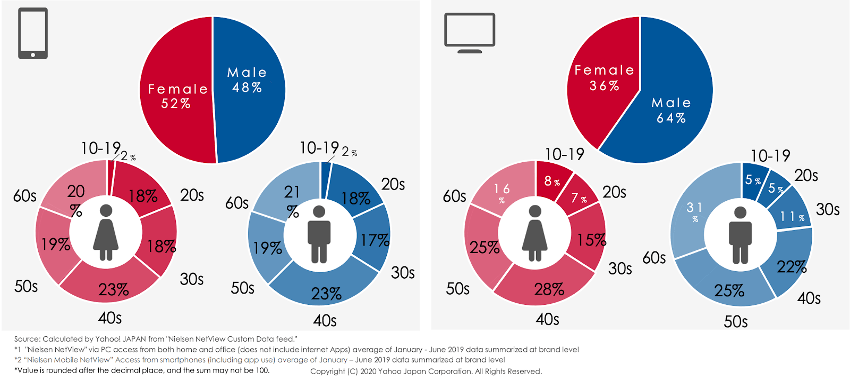Insights >
Beginner’s guide to the Japanese PPC


New: 2025 Travel Industry Trend Report | download for FREE >>


Are you new to Japanese PPC marketing scene? This beginner’s guide is for you!
Are you thinking about promoting your business in the far east but don’t know where to begin? To help you get started, we’ve put together a quick guide to the Japanese PPC market. We hope you can use this as a starting point for creating a Japanese online advertising strategy for your business.
A nation historically known for traditional-media-centric advertising, recent media ad spend market share has seen a significant rise in digital. In 2020 digital ad spend ($15.88 billion) surpassed the TV ad spend by $2 billion for the first time in history, and has been growing ever since.1 hcIt is expected to reach 26.08 billion in 2023.
With digital media numbers increasing in Japan, businesses can no longer ignore the significance of integrating a digital marketing strategy into the overall marketing mix. PPC is now more important than ever before. However, digital advertising is still dependant on having a good online reputation. We recommend including SEO and social media in your Japanese online marketing plan for better results in the Japanese market.
The Japanese market is unique compared to the west as Google is not the only dominant search engine. Although users are trending towards Google, Yahoo! JAPAN is still the nation’s largest web portal with 79+ billion MPV3. According to StatCounter, Google has about 77.1% of the market share and Yahoo! JAPAN 14.8%. Depending on your business sector and target audience, you may want to run tailored campaigns on different platforms.
Everyone uses Google and we’re all aware that they have most of the world’s search engine market share, but what do we know about Yahoo! JAPAN? First of all, it is not the Yahoo that the rest of the world is familiar with. Unlike Yahoo owned by Verizon Media, Yahoo! JAPAN is owned by SoftBank Corp. and is strictly in Japanese, made for the Japanese audience. They have over 100 services and many mobile apps such as Yahoo News, Yahoo Shopping, Yahoo Weather, and Yahoo Navigation. In addition, Yahoo! JAPAN offers credit cards as well as Paypay, Japan’s No.1 cashless smartphone payment system3.

It is notable to mention that with 68.4 million PC users, Yahoo! JAPAN has the No.1 PC penetration in Japan3. As you can see, Yahoo! JAPAN users are evenly distributed across all demographics for smartphone users. As for PC users, there are more male users in older age groups.

Furthermore, the platform is popular among housewives/househusbands (homemakers) and business managers, making the platform a great channel to advertise household items, fashion brands, and B2B services.
Our advice for channel selection? Definitely run Google Ads, but make sure to include Yahoo! JAPAN as well. The latter has many services and associated mobile apps where your ads will appear to a different audience. In addition, it has a different inventory of partner sites that Google’s inventory does not have. Therefore, choosing both media for your Japanese campaigns is the best way to maximise your internet user reach in Japan.
You will find the following types of Pay Per Click ads on the above-mentioned platforms:
Other ad types that apply to both sponsored search and display ads:
We cannot stress this enough. The Japanese are meticulous when it comes to selecting the right product and making a purchase. Gaining their trust online as well as making a good first impression is essential for conversions! For this reason, the ad copy must be in perfect Japanese in order to get the visitor to click through. When they arrive at your landing page, the content must be in native Japanese. In fact, if you use a non-Japanese landing page, you may see people clicking through but your CVR will remain low. As a result, you will quickly burn through your campaign budget. Even today, translation technology is not perfect so we definitely recommend that you hire a native speaker to localise your content.
Key takeaway: hire a proper localisation agency and get a native speaker to either write or proofread your content.
Translating Japanese is an especially difficult skill to master due to the language’s unique cultural nuances. To explain, the Japanese consumer is extra sensitive to the level of politeness and use of vocabulary in ad copy. To add to the several levels of formal Japanese, there are also three alphabets – hiragana, kanatana and kanji. Every business should know how to write their brand name in kanatana. In addition, Japanese characters use a double-byte system as opposed to English where it uses a single byte per character. Therefore, it is essential to have a native Japanese speaker go over your campaign and landing page content.
As for cultural differences, you will find that the Japanese are generally very quality conscious. Visitors to Japan will note the high quality of service and products, and this is very much applicable online. Compared to other markets, attention to detail is key to gaining Japanese customers. Furthermore, Japan has very different holidays and unique ways of celebrating known holidays such as Christmas and New Year. These are all important factors to consider when constructing your campaign calendar.
If your company is already running Japanese PPC campaigns in other markets, taking your existing keywords and translating them is a good starting point. Another source of keywords is search queries. Again, it’s important to get a native Japanese PPC expert to look over the list and ensure they are translated correctly and then properly analyse the keywords. We recommend using the keyword planner for Google Ads or keyword advice tool for Yahoo! JAPAN Ads. These tools are great and easy to use, but it’s more important to be able to recognise trends. In fact, a good PPC marketer or agency should be able to advise you on keyword trends based on your brand and industry.
Like all marketing activities, your PPC campaigns should have defined KPIs to make it easy for you to track your results. This is especially important when starting a promotion in a new market using a different language. Using existing CTRs and CVRs as a benchmark is also useful, but keep in mind that you are entering a completely new territory. Results can vary dramatically.
What do we recommend? Setting realistic KPIs to start, then monitoring campaign performance on a daily basis. That way, if you see more impressions or your CTR increases, you can adjust the budget accordingly. For SMEs with smaller budgets, try to set aside a minimum of 100 000 JPY (approx. 745 GBP / 850 EUR / 930 USD) per month for 3-6 months in order to get enough data and see results. This data will help you identify trends for your product or service in Japan (i.e. search volumes for day of the week, time of day, beginning or end of the month, etc.).
It goes without saying, but the right digital marketing agency for the Japanese market will have experience, expertise and proven results. Ensure that the agency has a Japanese native speaker on their PPC team.
Are you ready to start your Japanese digital marketing promotions? Our team of Japanese PPC experts would be happy to assist you with our consultation, localisation, and online advertising services. Contact us for your free initial consultation.
1Source: eMarketer (March 2020)
2Source: eMarketer (April 2020)
3Source: Yahoo! JAPAN Media Sheet (March 2020)